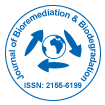Nuestro grupo organiza más de 3000 Series de conferencias Eventos cada año en EE. UU., Europa y América. Asia con el apoyo de 1.000 sociedades científicas más y publica más de 700 Acceso abierto Revistas que contienen más de 50.000 personalidades eminentes, científicos de renombre como miembros del consejo editorial.
Revistas de acceso abierto que ganan más lectores y citas
700 revistas y 15 000 000 de lectores Cada revista obtiene más de 25 000 lectores
Indexado en
- Índice de fuentes CAS (CASSI)
- Índice Copérnico
- Google Académico
- sherpa romeo
- Abrir puerta J
- Revista GenámicaBuscar
- Claves Académicas
- TOC de revistas
- InvestigaciónBiblia
- Infraestructura Nacional del Conocimiento de China (CNKI)
- Directorio de publicaciones periódicas de Ulrich
- Acceso a la Investigación Global en Línea en Agricultura (AGORA)
- Búsqueda de referencia
- Universidad Hamdard
- EBSCO AZ
- OCLC-WorldCat
- Catálogo en línea SWB
- publones
- Fundación de Ginebra para la educación y la investigación médicas
- MIAR
- ICMJE
Enlaces útiles
Revistas de acceso abierto
Comparte esta página
Abstracto
Potential Effect of Two Bacillus spp on Decolorization of Azo dye
Maulin P Shah, Patel KA, Nair SS and Darji AM
Decolorization of azo dye by two bacterial species Bacillus megaterium and Bacillus cereus has been analyzed using mineral effluent, consisting of known concentration of the dye in ZZ medium. Physico chemical parameters such as carbon and nitrogen source, temperature, pH and inoculum volume are optimized for the decolorization process by changing one parameter at a time. Optimal condition for Bacillus cereus was found to be 1% sucrose, 0.25% peptone, pH 7, temperature 37°C and 8% inoculum and that for Bacillus megaterium was found to be glucose 1%, 0.25% yeast extract, pH 6, temperature 37°C and 10% inoculum. Extent of decolorization recorded by Bacillus cereus under ideal conditions was 95% and that by Bacillus megaterium was 98%. The study has confirmed the potential of Bacillus cereus and Bacillus megaterium in the decolorization of Azo dye and opened scope for future analysis of their performance in the treatment of textile effluent.
Revistas por tema
- Agricultura y acuicultura
- Alimentación y Nutrición
- Bioinformática y biología de sistemas
- Bioquímica
- Ciencia de los Materiales
- Ciencia general
- Ciencias Ambientales
- Ciencias Clínicas
- Ciencias farmacéuticas
- Ciencias Médicas
- Ciencias Sociales y Políticas
- Ciencias Veterinarias
- Enfermería y atención sanitaria
- Física
- Genética y biología molecular
- Geología y Ciencias de la Tierra
- Ingeniería
- Inmunología y Microbiología
- Química
Revistas clínicas y médicas
- Anestesiología
- Biología Molecular
- Cardiología
- Cirugía
- Cuidado de la salud
- Dermatología
- Diabetes y Endocrinología
- Enfermedades infecciosas
- Enfermería
- Gastroenterología
- Genética
- Inmunología
- Investigación clínica
- Medicamento
- Microbiología
- Neurología
- Odontología
- Oftalmología
- Oncología
- Pediatría
- Toxicología

 English
English  Chinese
Chinese  Russian
Russian  German
German  French
French  Japanese
Japanese  Portuguese
Portuguese  Hindi
Hindi